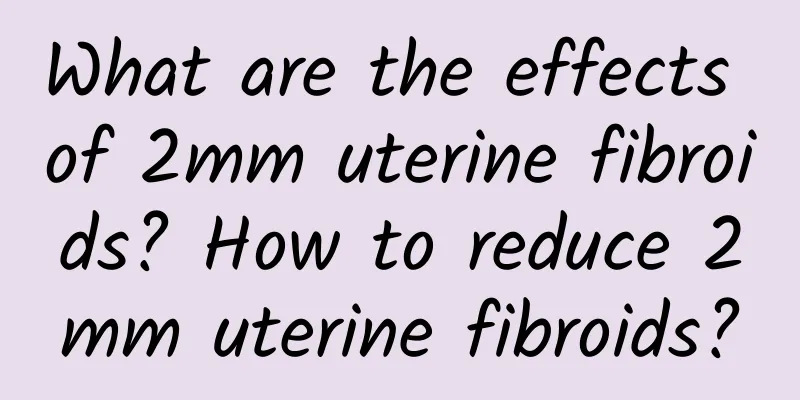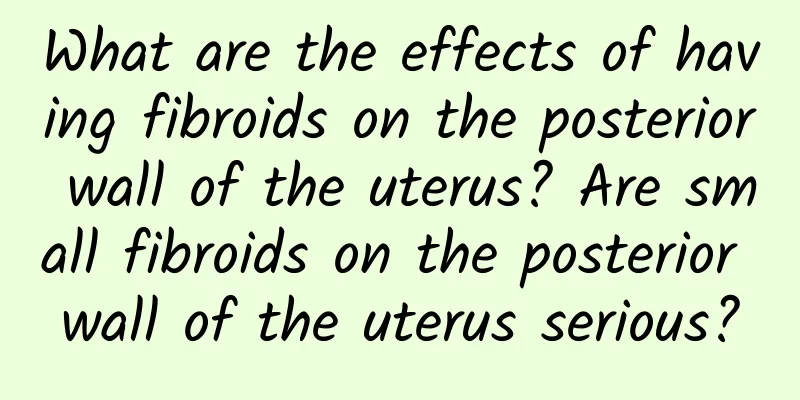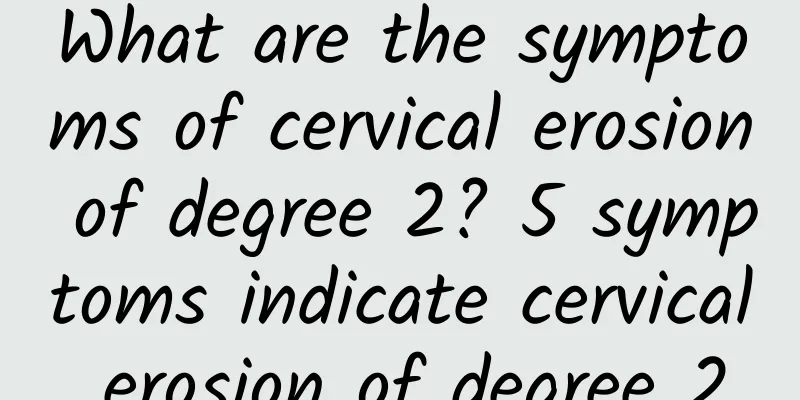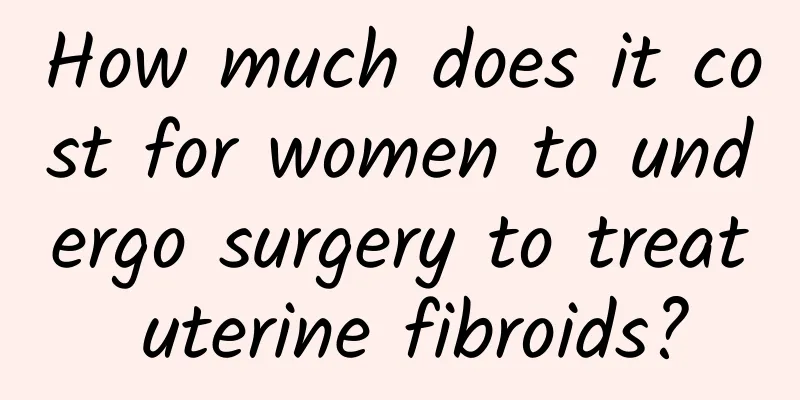What are the effects of 2mm uterine fibroids? How to reduce 2mm uterine fibroids?

|
What are the effects of a 2mm uterine fibroid? How can a 2mm uterine fibroid be reduced? Uterine fibroids are a common benign tumor in women, ranging in size from tiny to huge. However, even a 2 mm uterine fibroid may have a certain impact on a woman's body. So, what are the effects of a 2 mm uterine fibroid? How can it be eliminated? This article will explore from multiple angles. 1. The impact of 2 mm uterine fibroids: 1. Cause uterine bleeding: Although a 2 mm uterine fibroid is small, it may still cause irregular proliferation of the endometrium and lead to irregular uterine bleeding. 2. Increase the risk of infertility: Uterine fibroids can cause changes in the uterine shape, damage the endometrium and embryo implantation. A 2 mm uterine fibroid may have a slight effect on reproductive ability and increase the possibility of difficulty in getting pregnant. 3. Compression of surrounding organs: The location of a 2 mm uterine fibroid may cause it to exert pressure on the bladder or rectum, leading to symptoms such as frequent urination, urgency, and constipation. 2. Methods for the regression of 2 mm uterine fibroids: 1. Observation and reexamination: For small fibroids of 2 mm, doctors generally recommend that women observe and reexamine them regularly to ensure that their size and symptoms do not worsen further. 2. Drug treatment: Choosing appropriate drug treatment is also one of the ways to relieve the symptoms of uterine fibroids. For example, using progesterone drugs to reduce uterine bleeding and improve irregular menstruation. 3. Surgical treatment: When a 2 mm uterine fibroid causes obvious symptoms or significantly affects fertility, the doctor may recommend surgical treatment. Common surgical methods include myomectomy and endometrial ablation, during which the fibroid can be removed or reduced to achieve the purpose of treatment. Although a 2 mm uterine fibroid is small, it may still have a certain impact on a woman's body. It may cause uterine bleeding, increase the risk of infertility, and compress surrounding organs to cause corresponding symptoms. For treatment, observation and review, drug therapy, and surgical treatment are common methods. The final treatment plan needs to be determined according to the patient's specific situation. Therefore, for patients with 2 mm uterine fibroids, regular review and active treatment are very important to ensure women's physical health and fertility. |
<<: What medicine is effective for uterine fibroids? What medicine can eliminate uterine fibroids?
Recommend
What are the main things to check before abortion?
Abortion is very common in today's life. Peop...
Experts explain how to prevent threatened abortion
Pregnancy is the most important event in a woman&...
Can HIIT high-intensity interval training help you build muscle in a short period of time? Japanese doctors dispel myths
HIIT is the abbreviation of High-Intensity Interv...
Understand the hazards of cervical erosion in women
In today's society, many women suffer from ce...
Naked! Take off your clothes and go to the gym naked
People who pursue "naturism" are most f...
Will a miscarriage occur naturally if the fetus stops moving? See what the doctor says
If the fertilized egg is affected in the initial ...
What are the precautions after medical abortion? Know it early and benefit early
There are many things that women need to pay atte...
Ectopic pregnancy may be caused by maldevelopment of the fallopian tube
Ectopic pregnancy may be caused by dysplasia of t...
What Chinese medicinal materials should not be eaten for uterine fibroids? What foods should not be eaten for uterine fibroids?
Uterine fibroids are a common gynecological disea...
Control your diet and eat right 1 hour before exercise to lose weight
[Key Points]: It is said that "Misfortune co...
How to prevent recurrence of cervical precancerous lesions
How can we prevent the recurrence of cervical pre...
What to do if endometritis causes irregular menstruation
Endometritis may cause menstrual irregularities, ...
Why does moderate cervical erosion lead to severe erosion? 4 reasons for cervical erosion
Uterine erosion has a great impact on women's...
What does inevitable miscarriage mean and what are the causes of inevitable miscarriage?
Inevitable miscarriage is a miscarriage that cann...
[Lazy Pack] How to treat dry skin, fine lines, dullness and dark spots? Nutritionists teach you how to eat the right foods to moisturize and fight inflammation
The epidemic has heated up again recently, and we...









